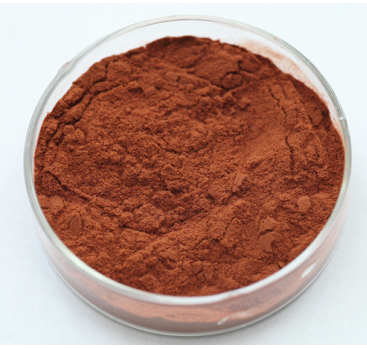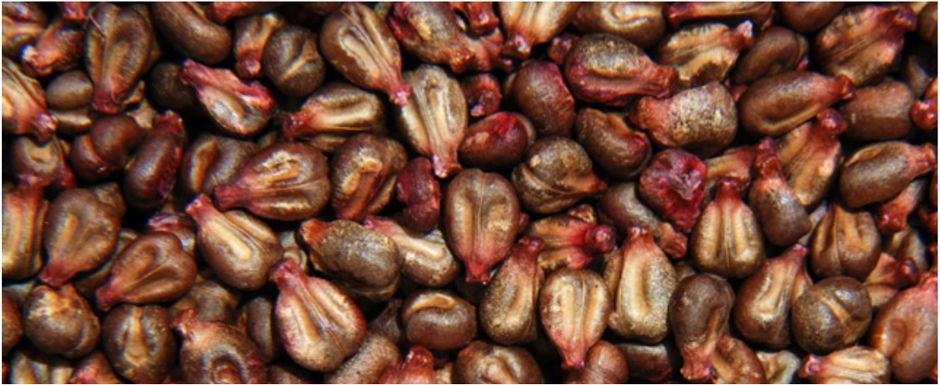Professional Design Grape seed extract Factory from Germany
Professional Design Grape seed extract Factory from Germany Detail:
[Latin Name] Vitis vinifera Linn
[Plant Source] Grape seed from Europe
[Specifications] 95%OPCs;45-90% polyphenols
[Appearance] Red brown powder
[Plant Part Used]: seed
[Particle size] 80 Mesh
[Loss on drying] ≤5.0%
[Heavy Metal] ≤10PPM
[Pesticide residue] EC396-2005, USP 34, EP 8.0, FDA
[Storage] Store in cool & dry area, keep away from the direct light and heat.
[Shelf life] 24 Months
[Package] Packed in paper-drums and two plastic-bags inside.
[Gerneral feature]
- Our product has passed the ID test by ChromaDex, Alkemist Lab. and other
third-party authoritative testing institutions, such as detection;
2. The pesticide residues match (EC) No 396/2005 USP34, EP8.0, FDA and other foreign pharmacopoeia standards and regulations;
3. The heavy metals in strict accordance with the foreign pharmacopoeia standard controls, such as USP34, EP8.0, FDA, etc.;
4. Our company set up a branch and import raw materials directly from Europe with strict control of heavy metal and pesticide residue. Aslo ensure the procyanidins content in grape seed is more than 8.0%.
5. OPCs over 95%, polyphenol over 70%, high activity, the oxidation resistance is strong, the ORAC more than 11000.
[Function]
Grapes (Vitis vinifera) have been heralded for their medicinal and nutritional value for thousands of years. Egyptians ate grapes a very long time back, and several ancient Greek philosophers spoke about the healing power of grapes — usually in the form of wine. European folk healers made an ointment from the sap of grapevines to treat skin and eye diseases. Grape leaves were used to stop bleeding, inflammation, and pain, such as the kind brought on by hemorrhoids. Unripe grapes were used to treat sore throats, and dried grapes (raisins) were used for constipation and thirst. Round, ripe, sweet grapes were used to treat a range of health problems including cancer, cholera, smallpox, nausea, eye infections, and skin, kidney, and liver diseases.
Grape seed extracts are industrial derivatives from whole grape seeds that have a great concentration of vitamin E, flavonoids, linoleic acid and phenolic OPCs. The typical commercial opportunity of extracting grape seed constituents has been for chemicals known as polyphenols having antioxidant activity in vitro.
Product detail pictures:

Related Product Guide:
Our primary purpose is to give our shoppers a serious and responsible company relationship, giving personalized attention to all of them for Professional Design Grape seed extract Factory from Germany , The product will supply to all over the world, such as: Los Angeles, Algeria, Bandung, To keep the leading position in our industry, we never stop challenging the limitation in all aspects to create the ideal products. In his way, We can enrich our life style and promote a better living environment for the global community.
https://www.isotonicsonline.com/isotonic-supplements/opc/isotonix-opc-3/ Isotonix OPC-3® is an isotonic-capable food supplement that is made from a combination of bilberry, grape seed, red wine, pine bark extracts and citrus extract bioflavonoids, all found to be potent antioxidants. Oligomeric proanthocyanidins (OPCs) are bioflavonoids (complex organic plant compounds) found in fruits, vegetables and certain tree barks that provide exceptional nutritional benefits to the human body. Studies have shown OPCs to be up to 20 times more powerful than vitamin C and 50 times more powerful than vitamin E in neutralizing free radicals. Isotonix® OPC-3 contains the only isotonic form ofPycnogenol® in the world. Pycnogenol is a natural plant extract from the bark of the French maritime pine tree, and the most clinically researched and potent bioflavonoid.
In this clip (4 of 10), Dr. Sasisekharan examines some of the key features of linear polysaccharides, with chrondroitin and heparin as examples.
This clip is part of a lecture, “Studying the Effects of Natural Products,” by Ram Sasisekharan, Ph.D, Alfred H. Caspary Professor of Biological Engineering and Health Sciences and Technology at the Massachusetts Institute of Technology. This lecture, given at NIH in 2006, is part of the National Center for Complementary and Alternative Medicine Online Continuing Education Series. Free CME/CEU credit is available to health professionals (see https://nccam.nih.gov/training/videolectures).
It is not easy to find such a professional and responsible provider in today's time. Hope that we can maintain long-term cooperation.







